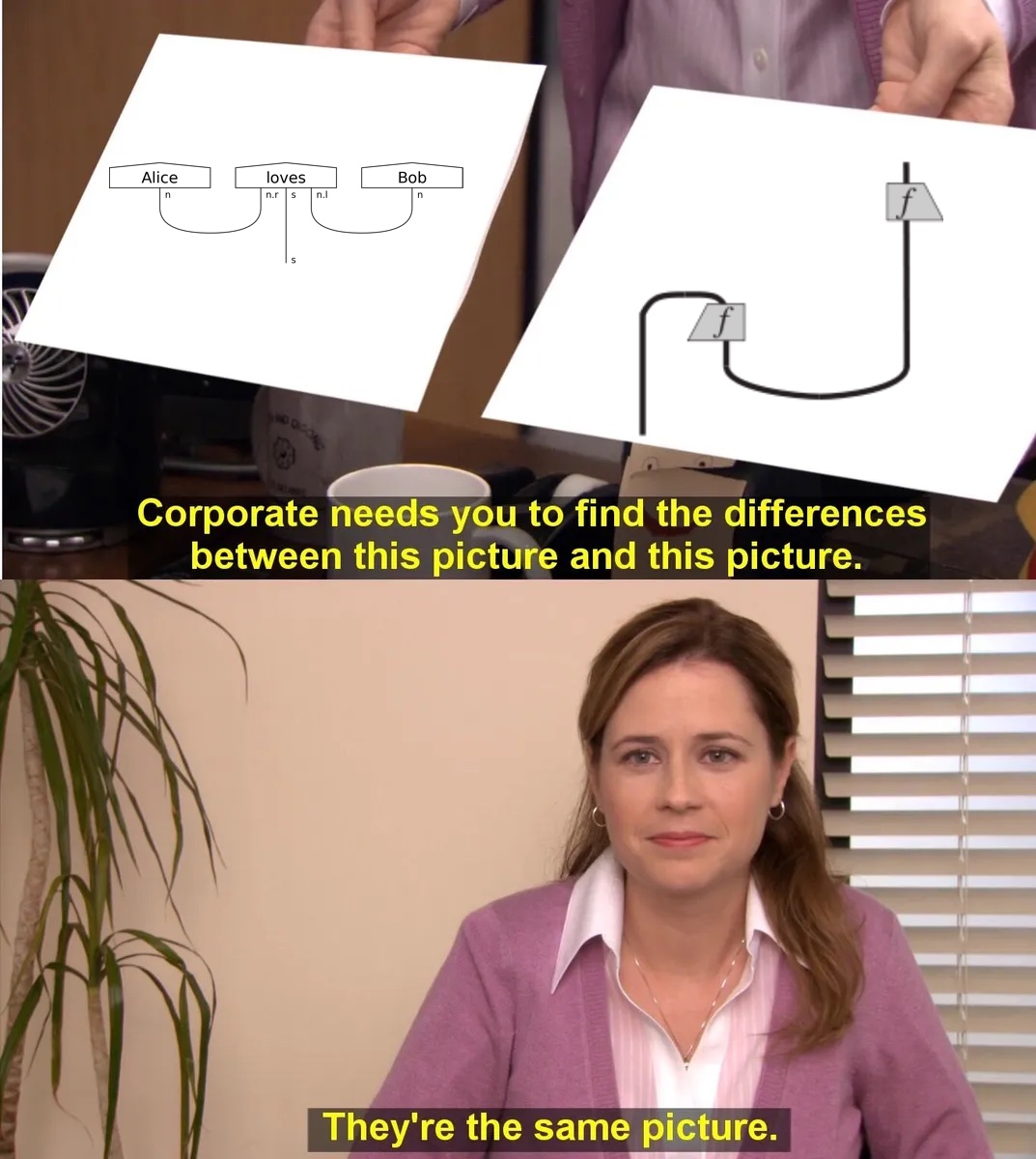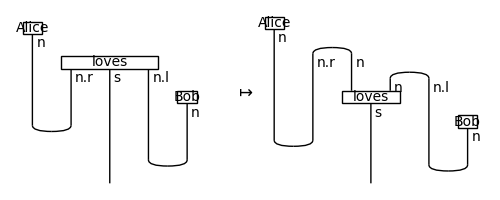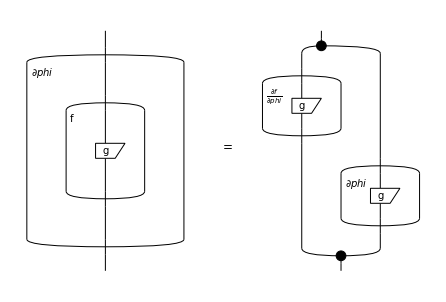Category Theory for Quantum Natural Language Processing
DisCoPy: a toolkit for computing with string diagrams
Alexis TOUMI
JIQ'22, Paris
QNLP: the meme

QNLP: the recipe
Tree ingredients
Three steps
- Parse the given text to get a string diagram
- Map the grammar to a circuit using a functor
- Tune the parameters to solve a data-driven task
You already use string diagrams without knowing it
- Quantum circuits (see ZX-calculus)
- Tensor networks
- Neural networks
- Concurrent processes
- Electrical circuits
- Logical formulae (see existential graphs)
- The grammar of this sentence is a string diagram!
So what is a string diagram?
A box represents any process with a list of wires as input and output.
A signature is a collection of boxes and wires.
String diagrams can be defined by recursion:
- every box
- the identity
- so is the composition
- and the tensor
Cooking recipes are string diagrams!

- Pawel Sobocinski's Graphical Linear Algebra, i.e. linear algebra with all string diagrams and no vectors!
This sentence is a string diagram

- Noam Chomsky, Syntactic Structures (1957)
This sentence is a string diagram
- Joachim Lambek, The mathematics of sentence structure (1958)
- Joachim Lambek, Type grammar revisited (1997)
This Python code is a string diagram
from discopy import Ty, Word, Id, Cup
s, n = Ty('s'), Ty('n')
Alice, loves, Bob = Word('Alice', n), Word('loves', n.r @ s @ n.l), Word('Bob', n)
sentence = Alice @ loves @ Bob >> Cup(n, n.r) @ Id(s) @ Cup(n.l, n)
Monoidal categories
A monoidal category
domandcodfrom arrows to objects,idfrom objects to arrows,thenandtensorfrom pairs of arrows to arrows.
For example:
(Ty, Diagram)is the free monoidal category on a given signature,(type, Function),(int, Matrix),(list[int], Tensor), etc.
Monoidal functors
A monoidal functor
obfrom objects ofarfrom arrows of
For example (Ty, Diagram) (list[int], Tensor)
from discopy.tensor import Functor
F = Functor(ob={s: 1, n: 2},
ar={Alice: [1, 0], loves: [[0, 1], [1, 0]], Bob: [0, 1]})
assert F(sentence)
QNLP models
We define a QNLP model as a monoidal functor:

QNLP models
We define a QNLP model as a monoidal functor:
from discopy.quantum import qubit, Ket, H, X, CX, sqrt
from discopy.circuit import Functor
F_ = circuit.Functor(
ob={s: Ty(), n: qubit},
ar={Alice: Ket(0), loves: sqrt(2) @ Ket(0, 0) >> H @ X >> CX, Bob: Ket(1)})
assert F_(sentence).eval() == F(sentence)
QNLP models
We define a QNLP model as a parameterised monoidal functor:
Given a dataset
We call this functorial learning, a new category-theoretic approach to structured machine learning.
Diagrammatic Differentiation for Quantum Machine Learning
joint work with Richie Yeung and Giovanni de Felice

Check it out!
